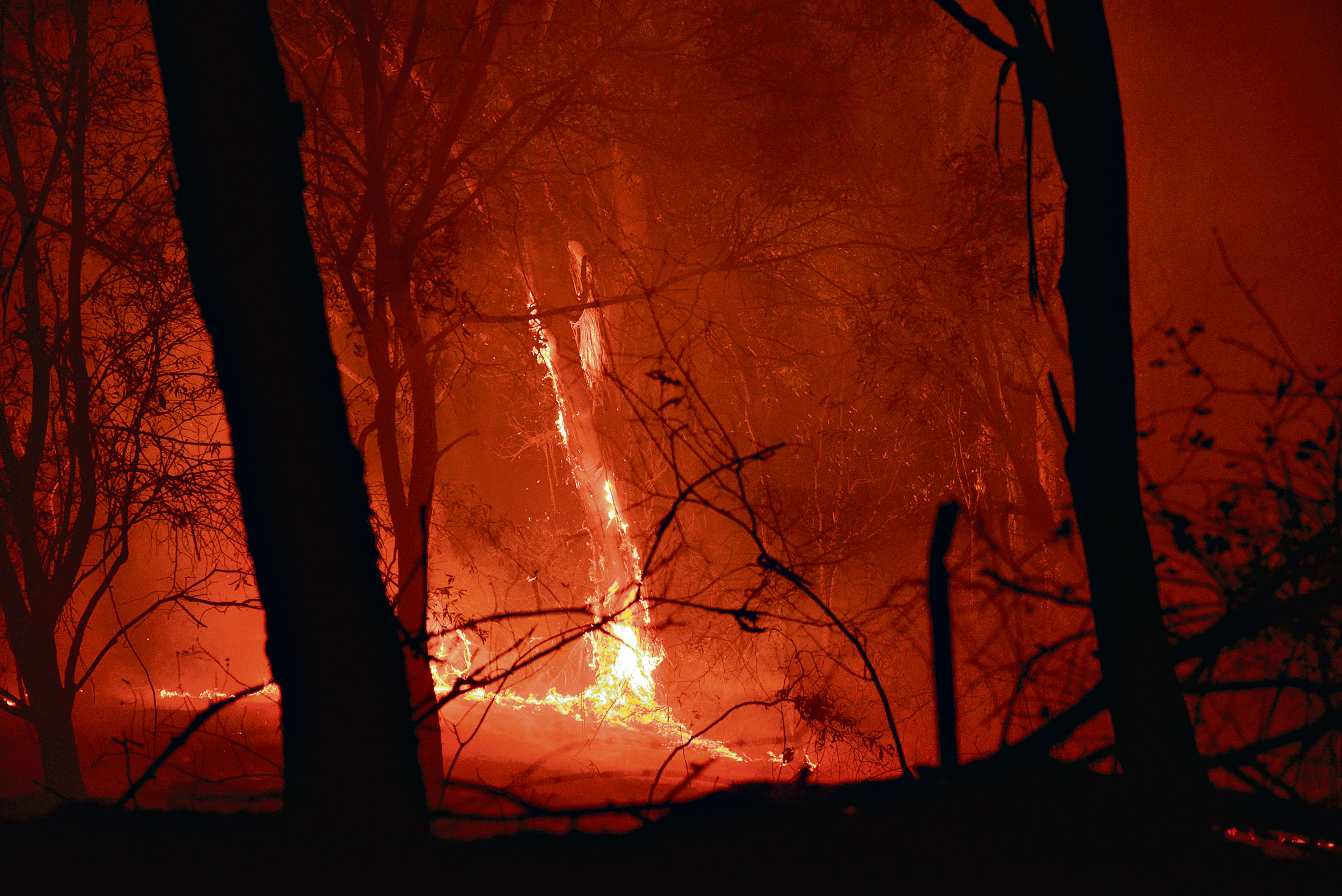
John Geiger overlooks the Sarabah Fire after it crossed Tabletop Road. Photo: Guardian & Tribune/Supplied
This story has been made free to all readers, please considering supporting our journalism with a subscription.
Fire chiefs have admitted to cancelling a strategic backburn to extinguish one of the state's most destructive fires two days before the blaze went on to destroy the historic Binna Burra nature resort, 11 homes and thousands of acres of heritage listed national park in the Gold Coast hinterland.
The backburn which involves lighting a fire in front of an oncoming blaze to starve it of fuel was due to go ahead from a dirt road in the Illinbah district about 35km west of the Gold Coast on the evening of September 5 but was cancelled after Queensland Fire and Emergency Services chiefs decided it was too dangerous.
The admission comes after the Guardian & Tribune Weekend tracked down and interviewed local rural fire service volunteers and residents who had proposed the backburn and were disgusted when it was cancelled at the last minute.
They denied the backburn was dangerous and argued that decisions were being made by fire chiefs unfamiliar with the area and its history of fires and who are overly concerned about the negative connotations of backburning.
Had the backburn at Tabletop Road late in the evening on September 5 gone ahead it may have saved houses and millions of dollars in damage from the fire which burned for days afterwards destroying the 86-year-old Binna Burra lodge and over a thousand hectares of Lamington National Park and surrounding districts.
In a statement, Queensland Fire and Emergency Services (QFES) Deputy Commissioner Mike Wassing said QFES regional operational management Ceased a planned backburn at Tabletop Road on September 5 because "conditions posed a significant threat to life".
He said QFES goal is to have "as little fire on the ground as possible in high risk and challenging conditions".
"For this reason, and in line with QFES’ tactical directive, all backburning operations require a thorough options analysis and a well-determined plan to be authorised by the appropriate responsible Incident Controller,'' he said.
"This process ensures that the increased risks associated with these operations are balanced with broader fire strategies, have the required allocation of resources, and are considerate of critical timings and broader factors."
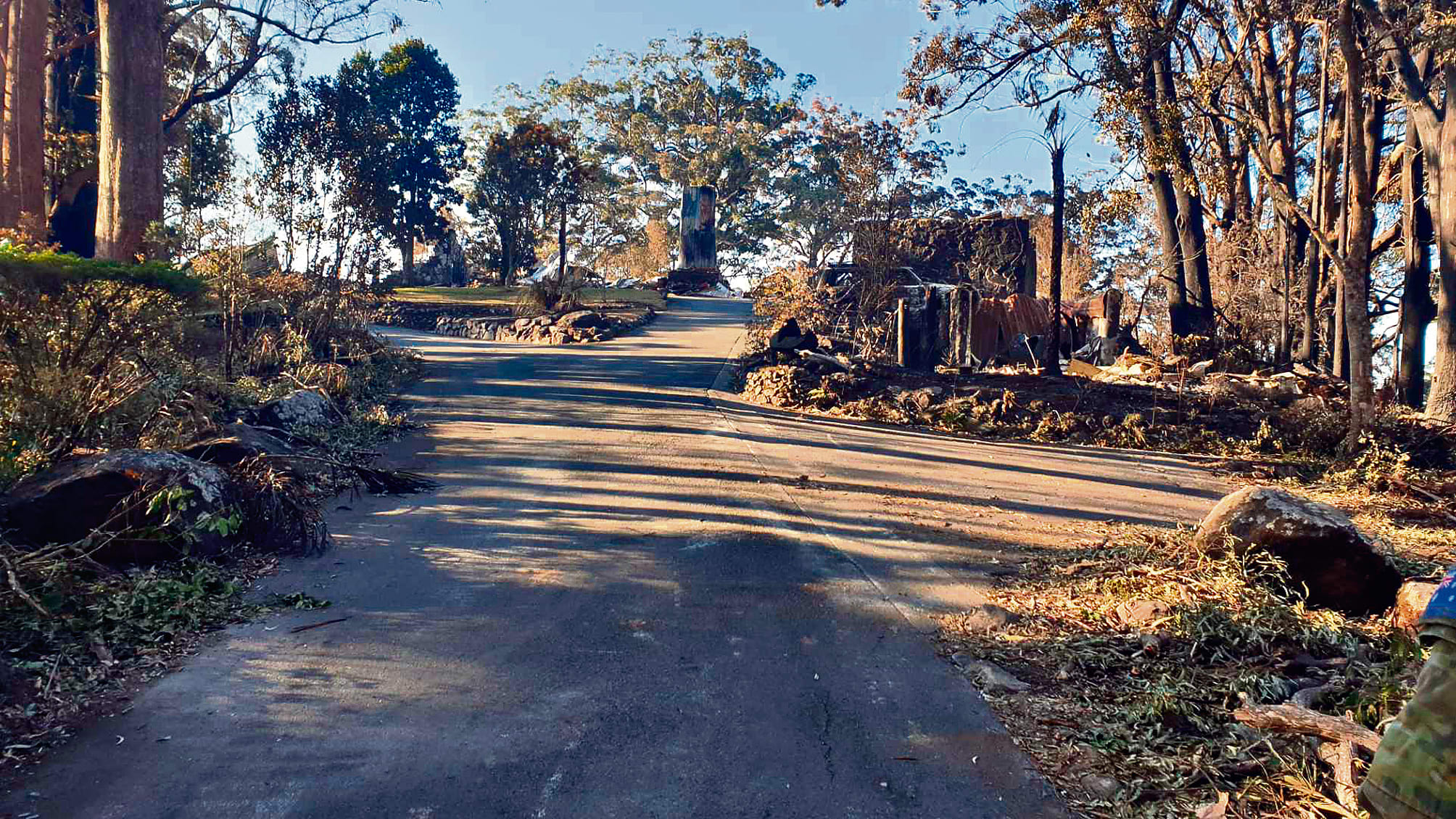
Two days before a bushfire incinerated an historic Queensland tourism icon, 11 homes and thousands of acres of a world heritage listed national park in the Scenic Rim, local farmer John Geiger went for a drive along a ridge in the district.
The 57-year-old, third generation resident and former volunteer rural fire fighter, was there to check on a blaze that had started in the neighbouring valley and was now nearing one of his paddocks.
Locals had spent the past 48 hours fighting the fire whenever it tried to burn across their properties in the Illinbah area about 35km west of the Gold Coast.
Thanks in part to favourable wind conditions, they saved their homes and much of the crackling dry pasture and their homes that lined the Upper Coomera River in the usually verdant valley.
Now as the wiry grazier stood atop the ridge on a dirt track called Tabletop Road in the fading afternoon light of September 5, he could see the fire was still steadily pushing south towards him fueled by the thickly treed scrub and bush that clung to the ridgetop.
As he watched the smoke rise in the dusk, he suddenly realised something.
The wind which had been pushing the fire all day had swung around to the south slowing the blaze and the temperature had dropped.
He looked back down Tabletop Road taking note of the sparse grass lining the dirt laneway and then he walked a few metres to peer down into the other side of the ridge into the neighbouring Sarabah Valley.
A few 100 metres down below him on the flat he could see two fire engines and their crews standing guard around a local’s house.
He took a few more minutes to check the conditions and then grabbed his phone and hurriedly punched in the number for his brother Stephen.
Stephen, 56, had just spent the past four days acting as an officer for the local Rural Fire Service helping to block the fire after it headed north up the other end of the Sarabah Valley.
John quickly briefed his brother on the plan to backburn from the northern side of Tabletop Road and have the two fire crews down on the other side of the ridge to make a fire break up to Tabletop Road and backburn from that side.
This backburning, lighting up land in front of a fire, was supposed to produce a buffer zone of scorched ground that would starve the oncoming fire into nothingness.
Stephen who had spent more than 20 years in the rural fire service and knew the area intimately immediately expressed his support and said he would ask the Queensland Fire Service for the go-ahead.
John, relieved, got off the phone and thought “this can work, we can put this thing out right now” and then he waited for the call back.

The blaze had started sometime late on Saturday August 31, 2019 in the Sarabah Valley - a picturesque rural enclave composed of mainly boutique farms, weekenders, a winery and few upmarket Bed and Breakfast properties.
Local teenagers smoking were later blamed by police for triggering the blaze - an explanation that many in the district felt was somewhat questionable, but it was what happened next that mattered.
Initially the fire tracked north towards Canungra, a small township of some 1400 people that sits close to the Australian Defence Force’s Land Warfare Training Centre - a large expanse of bush used mainly for jungle training.
As the blaze neared Canungra. Rural Fire Service volunteers including Stephen had successfully shut it down using bulldozers to cut firebreaks and backburning around some properties that were at risk.
But then around the midweek period the wind changed and the fire began running to the south, south-east and rising up out of the Sarabah Valley and flickering along and over the ridge into Illinbah where the Geigers lived.
By the end of the week the winds picked up further and the fire ripped south along the ridge separating Illinbah from Sarabah, until it raged out of control up into Queensland’s heritage listed Lamington National Park.
In doing so it would earn the title of the most destructive and spectacular of the multitude of blazes that broke out in 2019 around the state in what was later described as an unprecedented fire season during the nation’s hottest summer on record.
Millions of dollars in damage resulted from the fire. It forced the evacuation of 130 people, destroyed homes, livelihoods and thousands of acres of forest in and around the World Heritage listed Lamington National Park.
The destruction peaked with the immolation of historic Binna Burra Lodge an iconic bushwalking resort built in 1933 that overlooked the national park. The lodge had held a special place in Queensland’s nature tourism industry being one of the country’s longest established nature resorts.
With the smoke still rising from the charred ruins of the lodge, a string of politicians including Prime Minister Scott Morrison toured the devastation, expressing dismay.
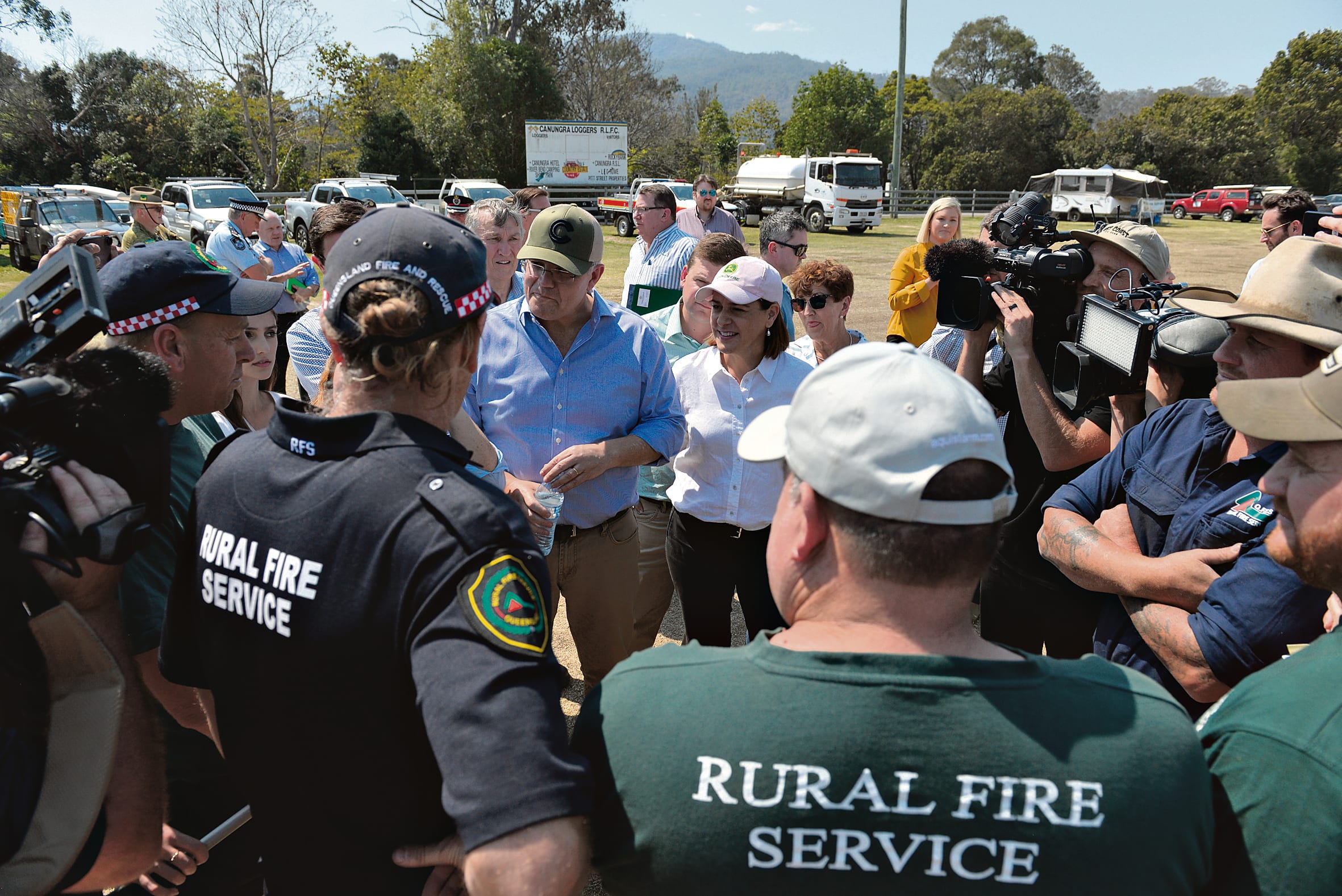
They pledged millions of dollars of taxpayers money to help rebuild the lodge and the Queensland Government ordered a special review into the 2019 bushfires.
The review’s official purpose was for the Emergency Management Inspector General Alistair Dawson to provide “observations and insights” about the fires and consolidate recommendations of the 2018 bushfire review.
Dawson’s review was welcomed by some residents in the Illinbah district who believed there had been mistakes about the way the fire was handled and now they would be investigated.
One thing they were especially keen to understand was whether there was a plan, to stop the fire at Tabletop Road because it was rumoured that a backburn request it had been denied.
Up on Tabletop Road that afternoon on September 5, as John had waited for the call back from his brother Stephen, he already knew fire authorities would be skittish about backburning.
In other districts rural fire services’ volunteers had taken to using code words on the radios to avoid being heard arranging a backburn.
“Can you bring up the chocolate cake” they would say when they wanted something quietly back-burned.
But John had still hoped his plan would get approval especially as it was likely to be the last chance before the weather worsened the following day.
After receiving the call from John, Stephen had driven to the Canungra operations centre and personally put the request to Kaye Healing – the Rural Fire Service South Coast Area Director.
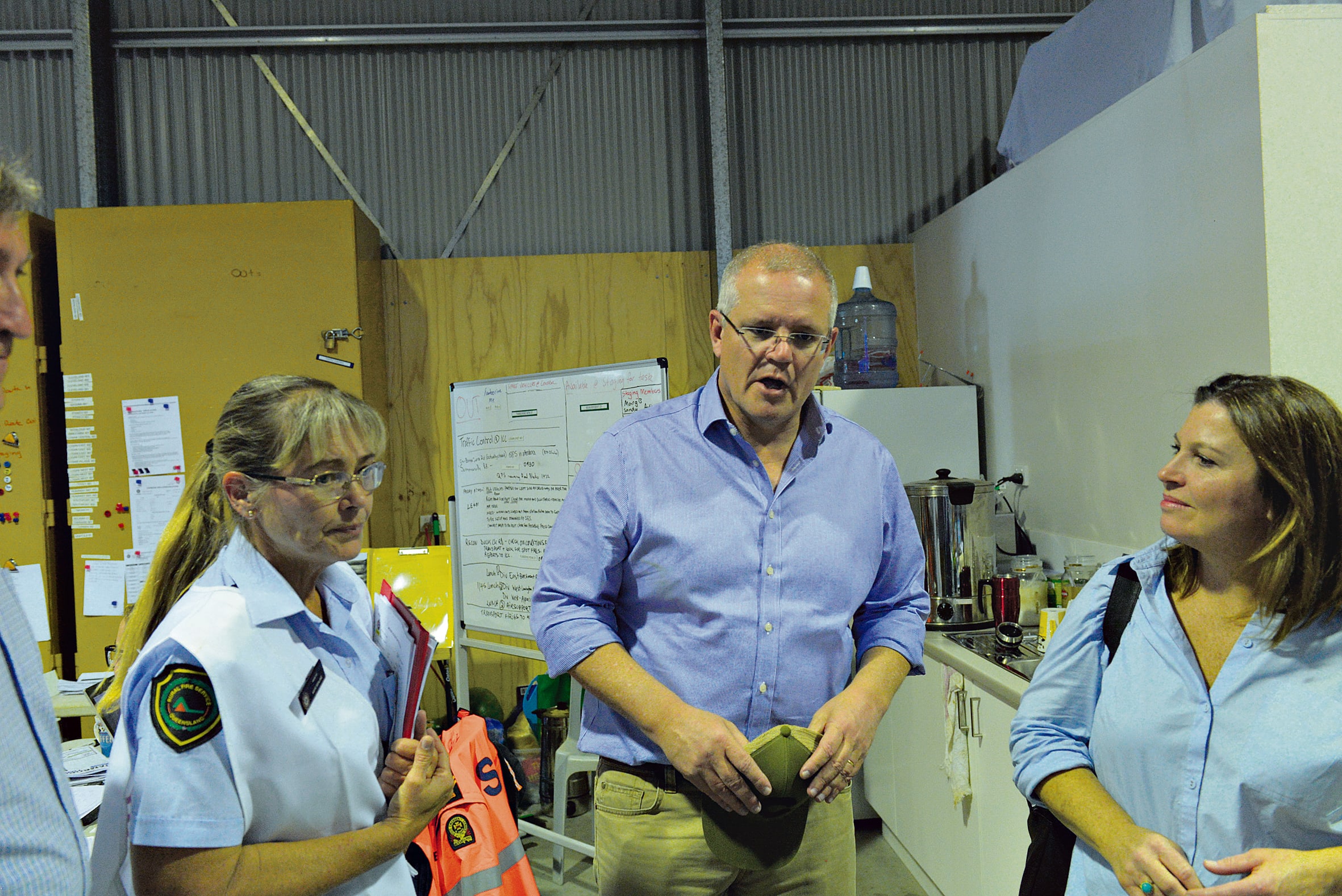
But Inspector Healing had some bad news according to Stephen.
“She said there was to be no backburning and the order came from the top,” said Stephen. He contacted his brother and gave him the message.
John was frustrated as he thought a fire engine would probably never even get close to the area in the morning. He got in his truck and drove home.
That night as he went to sleep all he could think about was how the fire might still be able to be stopped at Tabletop Road.
But the next day when he headed up to the ridge, the fire was a changed beast. Deadly flames metres high turbo-charged by a solid north westerly wind were ripping along the ridge closing in on Tabletop Road. No firebreak would turn them back.
His first thought was to protect a small hut his family had built further along the ridge. Despite the flames closing in, he got up along to the ridge and used the pump he had previously set up to wet everything down. This simple act would save the structure.
Then he headed down hill to a safe location and watched as the fire charged on heading straight towards Lamington National Park, Binna Burra and destruction.
Further up the valley, John’s father-in-law, John Hinchliffe was also monitoring the blaze.
The 75-year-old farmer who had seen many fires come through the valley, was looking south to where the steep ridge of the Illinbah district ended and dropped down into Lamington National Park.
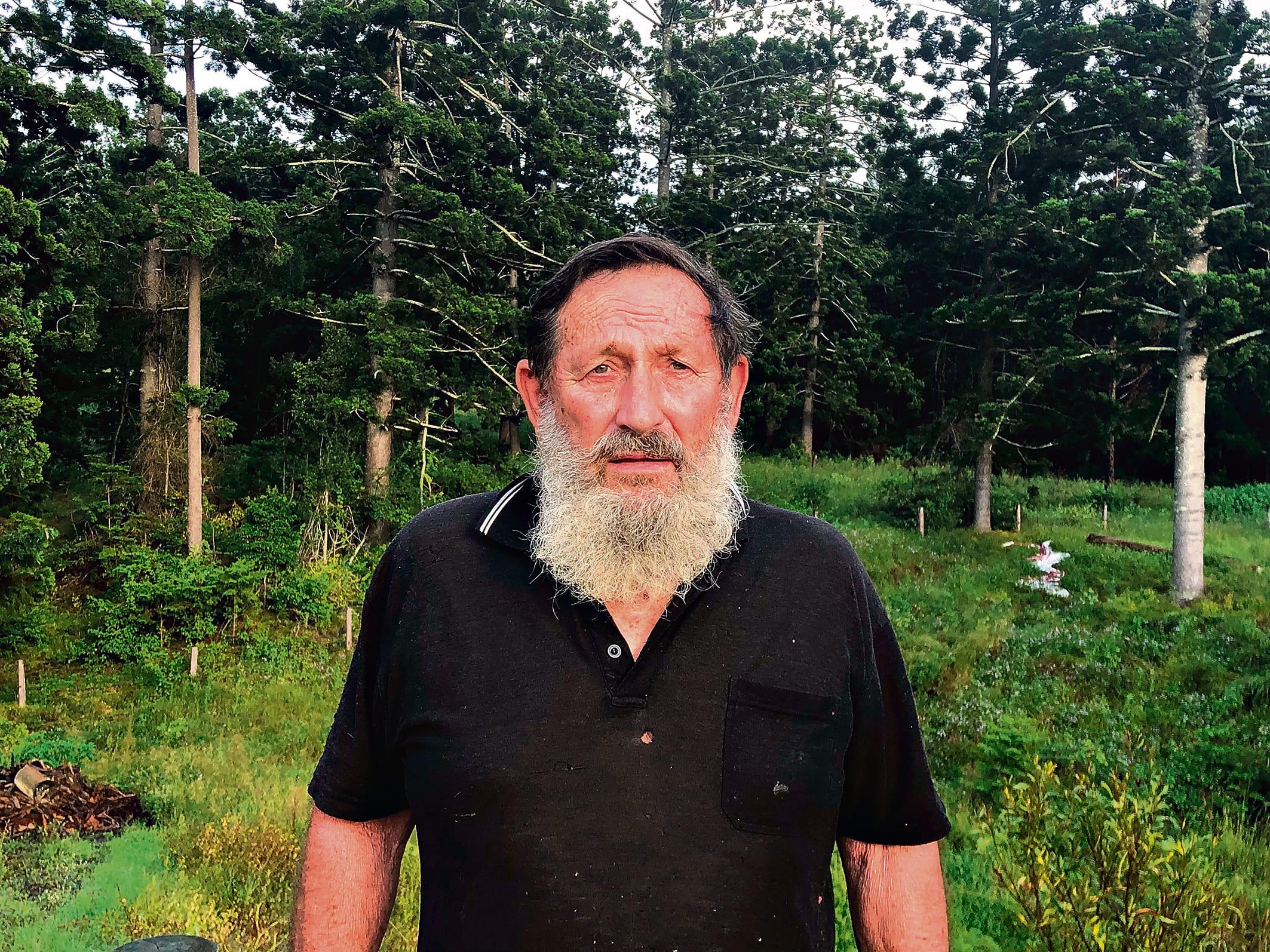
He watched the flames reach the tip of the last ridge before Lamington and then he saw something he described as out of this world.
“It was like a bomb went off, just a big orange flash right across the valley and Binna Burra was lit up by the big flash. The whole sky lit up. It would have been about five km and it must have been the gas out of the gum trees,’’ he said.
“I raced inside to get my son and by the time we came out it had turned to smoke.
“I looked over and said, look Binna Burra [bush] is alight.”
That afternoon authorities rapidly evacuated local homes around Binna Burra and the park and resort itself and within hours the only access road into the resort and national park was cut by fallen trees and rocks. The evacuation would later be praised as immensely timely.
“If the voluntary evacuation was left just a few hours later, hundreds of people would have been trapped in a life-threatening situation,” Binna Burra Lodge board chairman Steve Noakes would say when he presented an award to the lodge’s staff in November 2019.
In the aftermath, the Geigers and others involved in the fire, waited for someone to visit the district and investigate what happened but the main visitors to their sleepy valley were wildlife rescuers who flooded in to pluck the singed koalas out of the trees.
When the government’s review into the fires started, a number of residents including the Hinchliffes and the Geigers composed submissions that they sent to the Inspector General.
The Geiger’s submission spelled out the events on the afternoon of Thursday September 5 and called for Emergency Services to allow for backburning decisions to be made at local level by “those local wardens who understand the terrain [and] have knowledge of the local community”.
“We had the machinery, experienced local people ready and capable to burn with a southerly wind into the oncoming fire. We knew this would be the only chance to stop the fire with the changing weather forecast predicted for Friday of 32 degrees and 35 knot north westerly wind,’’ it said.
They also raised concerns about overgrown land being a source of fire fuel and speculated that land owners that left high fuel loads on their properties might face a rate levy to reflect land use. They argued that as land left for conservation areas and non-farming properties ends up posing a higher bushfire risk.
They sent the submissions and then they waited and waited but heard nothing back.
In early 2020, the completed review was released with Inspector-General Dawson stating it had “focused on the bushfires around Sarabah, Stanthorpe and Peregian Springs and had considered the issues of “hazard mitigation and risk reduction, preparedness and planning and response”.
In what appeared to be a direct reference to the Geiger’s concerns, it noted three submissions had been received from members of the public who “felt the limitations to local decision making around backburning negatively impacted on the firefighting effort”.
It also noted the submissions of special rate levies for conservation or non-farming properties.
But that was it. Nowhere did the report bother to specifically consider the issue raised by the Geigers that the fire should have been stopped on Tabletop Road if a backburn had been authorised.
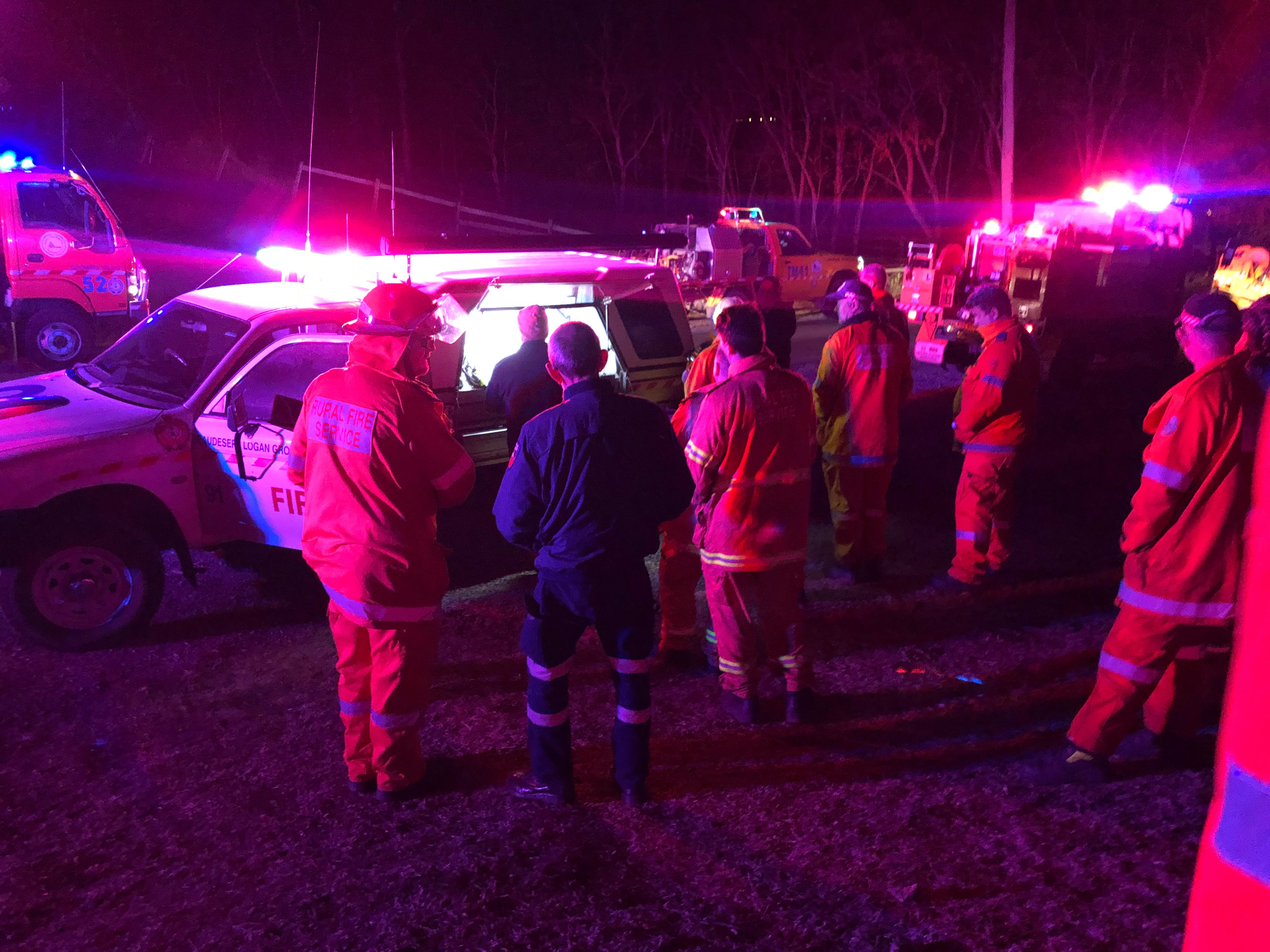
The report focused only on three case studies none of which specifically related to the worst and most controversial blaze at Sarabah.
And it concluded that there had been “individual examples of exemplary practice in places.”
“It shows the innovation, flexibility and partnerships which were illustrative of firefighting practice where it occurred,” it said.
The Geigers weren’t surprised when they learned of the report’s contents.
They had yet to hear from anyone undertaking the review and neither had there been a proper debrief or debate about how the fire could have been handled better, let alone anyone bothering to come to their valley to speak to them.
For John Geiger it has gone beyond frustration.
“The biggest thing. They have to listen to local knowledge and the local firies and not somebody in an office.”
“When you got conditions coming like that you have to put the fire out. They should know that.”
Queensland Fire and Emergency Services (QFES) Deputy Commissioner Mike Wassing this week confirmed QFES operational management had ceased a planned backburn along Tabletop Road on September 5 “given that backburning under these conditions posed a significant risk to life”.
“Alternative firefighting techniques, such as the use of heavy machinery to establish fire breaks and aerial support, were authorised to manage the bushfire,” he said.
He said Sarabah had been experiencing unfavourable weather conditions on September 5, 2019 and these conditions were forecast to exacerbate in the coming days, hampering the ability of firefighters to safely conduct backburning.
Mr Wassing said the high temperatures, strong winds and extreme dry and hot conditions during the September 2019 period had resulted in changes to the approval process for backburning.
He said because of the conditions “greater control was placed on the approvals required to undertake high risk firefighting strategies in certain conditions.
“This policy recognised the unprecedented fire behaviour affecting Queensland at the time and was necessary to protect lives and minimise property loss,” he said.
“Putting fire into the landscape can be an effective strategy in containing bushfires and minimising the risk to life, or impact to property and assets. However, QFES’ goal is to have as little fire on the ground as possible in high risk and challenging conditions.
“For this reason, and in line with QFES’ tactical directive, all backburning operations require a thorough options analysis and a well-determined plan to be authorised by the appropriate responsible Incident Controller.
“This process ensures that the increased risks associated with these operations are balanced with broader fire strategies, have the required allocation of resources, and are considerate of critical timings and broader factors.”
He said following the conclusion of the 2019-2020 bushfire season, QFES conducted an extensive debrief process which collected almost 3,000 observations from volunteers and staff to better appreciate the efforts of QFES during the season and identify lessons learned.
“This process encompassed QFES’ response to the Sarabah bushfire and the learnings from this will help influence and improve the department’s response to natural disasters.
“This process was in addition to a separate review undertaken by the Inspector General Emergency Management (IGEM), and an investigation into the cause of the fire by Queensland Police Service (QPS).”
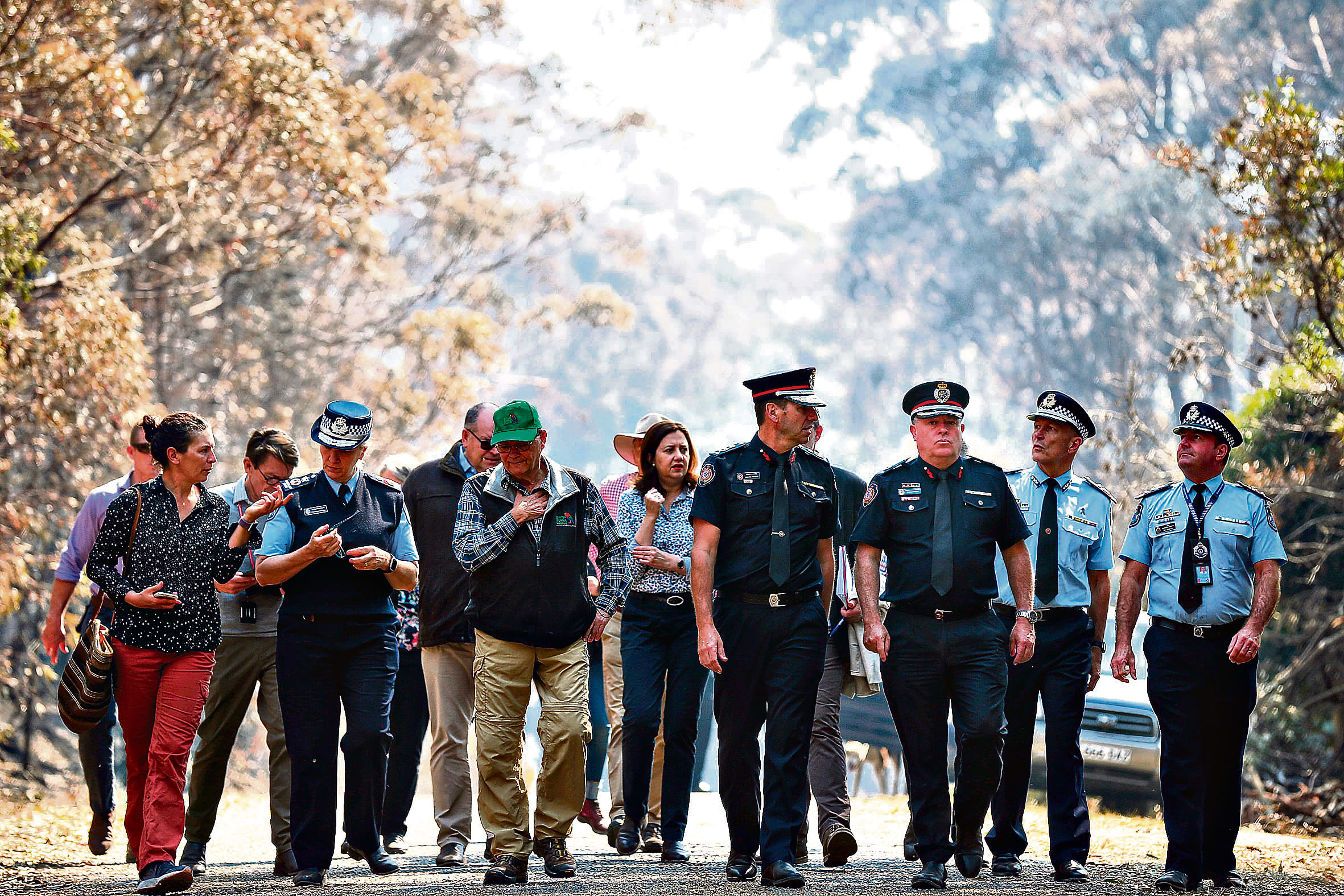
This week a spokesperson for the Inspector-General Emergency Management said it was not accurate to say the review report did not consider or refer to submission/s related to backburning requests.
She referred the Guardian & Tribune to the section of the review that noted receipt of the three submissions relating to “limitations to local decision making around backburning negatively impacted the firefighting effort”.
The review team considered information and data provided from a variety of different sources to create an evidence-base for the observations and insights in the review report, she said.
“The information contained in the report is validated by a wide range of information gathered by the Review Team from local, state and federal government agencies, and non-government organisations, reviewing documentation including legislation, policies, plans, guidelines, maps, departmental and sectoral data, processes and practices, previous reviews and recommendations, a telephone survey of 90 residents in the Sarabah fire area, and public submissions called from the local community.”
John Hinchliffe whose family has been in the district for five generations says changes must be made especially with local properties now carrying greater fuel loads after being “locked up” through Land for Wildlife or for other purposes.
“People think that had never happened before,’’ he said of the fire that raged up to Binna Burra.
“But I helped fight a fire in the 1960s that went all the way up to Beechmont. They stopped it when they called in the army who cleared a firebreak with hoes and shovels up to over the ridge and then they backburned. They put it out.
“If they don’t do something about this somebody will die.”
Know more to this story? Email tips and information to Rory Callinan privately and securely on rorycallinan@protonmail.com


